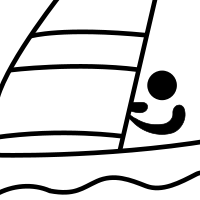Rushcutters Bay, New South Wales
| Rushcutters Bay Sydney, New South Wales | |||||||||||||
|---|---|---|---|---|---|---|---|---|---|---|---|---|---|
|
Rushcutters Bay | |||||||||||||
| Population | 2,372 (2011 census)[1] | ||||||||||||
| • Density | 11,900/km2 (31,000/sq mi) | ||||||||||||
| Postcode(s) | 2011 | ||||||||||||
| Area | 0.2 km2 (0.1 sq mi) | ||||||||||||
| Location | 3 km (2 mi) east of Sydney CBD | ||||||||||||
| LGA(s) | City of Sydney | ||||||||||||
| State electorate(s) | Sydney | ||||||||||||
| Federal Division(s) | Wentworth | ||||||||||||
| |||||||||||||
Rushcutters Bay is a harbourside eastern suburb of Sydney, in the state of New South Wales, Australia 3 kilometres east of the Sydney central business district, in the local government area of the City of Sydney.[2]
The suburb of Rushcutters Bay sits beside the bay it takes its name from, on Sydney Harbour. It is surrounded by the suburbs of Elizabeth Bay, Darlinghurst, Paddington, and Darling Point. Kings Cross is a locality on the western border.
History
The area was first known as 'Rush Cutting Bay' because the swampy land was covered in tall rushes used by early settlers for thatching houses. In 1878, 6 acres (24,000 m2) were reserved for recreation; and, after reclamation work was completed, Rushcutters Bay Park was created.
Rushcutters Bay was once the site of the famous Sydney Stadium.[3] On Boxing Day 1908 at the Stadium, Tommy Burns lost his heavyweight title to the legendary Jack Johnson, the first African-American to win a world title.
On 6 April 1927, Herbert Pratten, Federal Minister for Trade, appeared in a Lee DeForest film to celebrate the opening of a Phonofilm studio in Rushcutters Bay.[4]
The bay at Sydney Harbour served as host for the sailing events during the 2000 Summer Olympics.[5]

Demographics
At the 2011 census, the suburb of Rushcutters Bay recorded a population of 2,372 people. Of these:[1]
- Age distribution: Residents had a similar range of ages to the country overall, except for notably fewer children. The median age was 37 years, the same as the national median. Children aged under 15 years made up 4.9% of the population (national average is 19.3%) and people aged 65 years and over made up 13.6% of the population (national average is 14.0%).
- Ethnic diversity : Just under half (46%) were born in Australia, compared to the national average of 70%; the next most common countries of birth were England 6.5%, New Zealand 4.3%, South Africa 1.3%, United States of America 1.3% and Ireland 1.3%. At home, 66% of residents only spoke English; other languages spoken at home included French 2.0%, Spanish 1.6%, Japanese 1.1%, Italian 1.0% and Mandarin 1.0%.
- Finances: The median household weekly income was $1,372, compared to the national median of $1,234. This difference is also reflected in real estate, with the median mortgage payment being $2,050 per month, compared to the national median of $1,800.
- Transport: On the day of the Census, 33.1% of employed people traveled to work on public transport and 23.9% by car (either as driver or as passenger).
- Housing: The great majority (97.4%) of occupied private dwellings were flats, units or apartments, while 0.3% were separate houses, and 0.8% were semi-detached. The average household size was 1.5 people.
- Religion: The most common religious affiliation was "No Religion" (32.6%); the next most common responses were Catholic 20.3%, Anglican 12.4%, Buddhism 2.5% and Presbyterian and Reformed 2.1%.
References
- 1 2 Australian Bureau of Statistics (31 October 2012). "Rushcutters Bay(State Suburb)". 2011 Census QuickStats. Retrieved 21 November 2014.
- ↑ Gregory's Sydney Street Directory, Gregory's Publishing Company, 2007
- ↑ The Book of Sydney Suburbs, Frances Pollon, Angus & Robertson Publishers, 1990, Published in Australia ISBN 0-207-14495-8, page 232
- ↑ De Forest Phonofilms - Rushcutters Bay
- ↑ 2000 Summer Olympics official report. Volume 1. p. 379.
| Wikimedia Commons has media related to Rushcutters Bay, New South Wales. |
Coordinates: 33°52′39″S 151°13′42″E / 33.8774°S 151.2282°E
